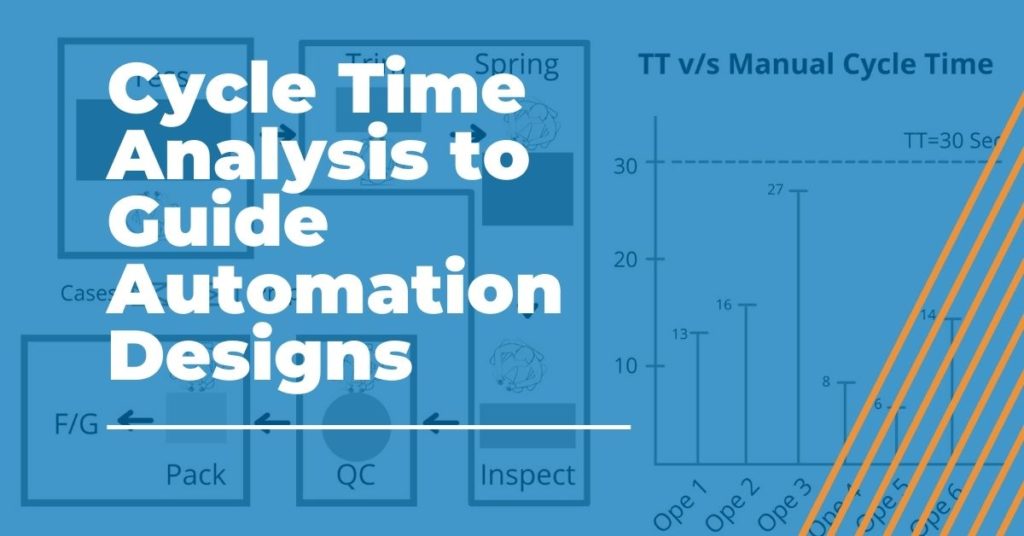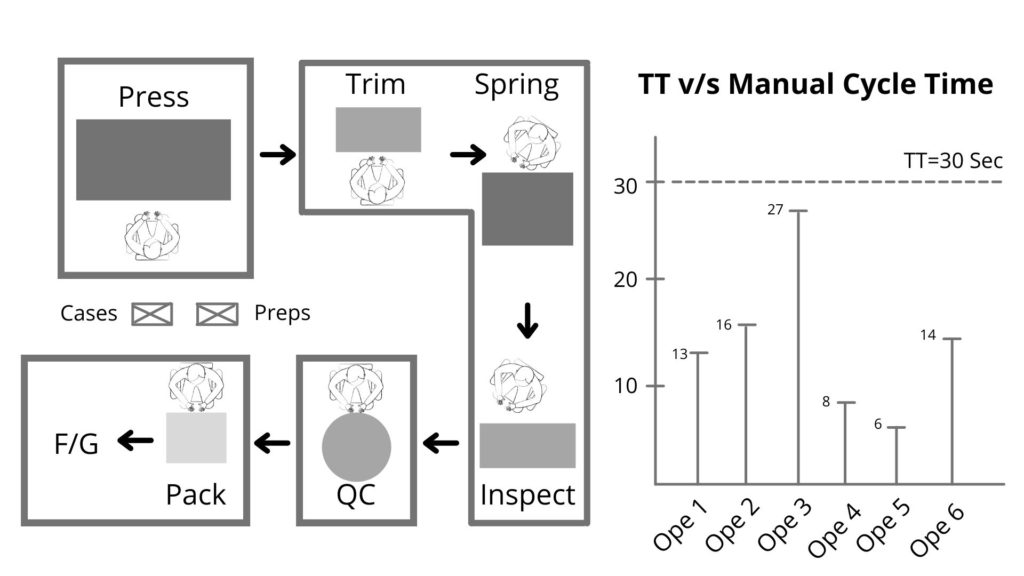
Manufacturing Cycle Time Analysis to Guide Automation Designs
In a design advice article posted on Automation Design Hacks, the author outlines an approach to manufacturing cycle time analysis to guide automation design decisions. It starts with thinking about how to use remaining time efficiently versus simply thinking about how long a product takes to build. This approach is eye-opening, but before we get into it, let’s first define cycle time.
Manufacturing Cycle Time
Simply put, cycle time is the duration of time it takes to convert raw material into a finished product. In manufacturing this could include the time it takes to build, move and inspect a product. In the graphic below, cycle time includes the time required to prepare, test, inspect and package the product.

Reduce Your Manufacturing Cycle Time
Now that we know what cycle time is, let’s go back to the Automation Design Hacks article to learn the 10-step approach to reducing it.
- Identify all the assembly steps and estimate the time of each step. This could include moving the product, letting the glue cure, reloading the machine, deburring or cleaning up. Even steps that take seconds should be recorded, because we know that seconds add up! Once you have those times, add 20 percent.
- Next identify times that are fixed and out of your control. This could be system limitations, such as conveyor belt speed, timed safety features on a machine or cooling time.
- The next step in manufacturing cycle time analysis is to document non-cyclical times of the manufacturing process. These steps could be unpacking boxes, exchanging full and empty trays of product or human break periods. “A lot of non-cyclicals can be masked by other parts of the sequence or you can do mini-buffering to eliminate the effect on the overall, but they definitely need to be considered, and listing them now, early in the process, will help keep them on your mind,” the article recommends.
- Put your artist hat on and start sketching layouts for your assembly. Note the rough distances between stations and describe how the products move from one station to the next. Then estimate the time of each move or step in the layout.
- Add up all the times and compare to your desired cycle time to determine if the process needs further optimization.
- According to Automation Design Hacks, if the estimated manufacturing cycle time is over 85-90 percent of your goal cycle time you should start evaluating each step to determine if there is a way to optimize it. This could be rearranging the layout to shorten distances between steps or doing steps in parallel.
- If, after exhausting step 6, your target cycle time is still not reached, more drastic changes are needed. Changes like different technology, additional automation, kitting parts and other lean manufacturing processes should be considered.
- Still over? It’s likely your station is unbalanced. Consider moving some operations to another station or moving them upstream. Steps that require unique tooling or equipment are often promising processes to shift to another station since the equipment isn’t likely shared by any other step.
- The nuclear do-over: Major changes to the tooling, design and/or technology may need to be made in order to get your targeted cycle time. A total redesign will put you back at the start of this list, but is better than deploying a solution that will ultimately fall short.
- Lastly, add in all the process times and make sure to add in the non-cyclical times and any parallel time. Once again, if you’re still nearing your target manufacturing cycle time, head back to step 7 to find additional ways to reduce it further.
Make sure to read the entire article for more details on each step of the approach. It’s important to note that you might not achieve your targeted cycle time by following these steps 1-10 the first time through. You might need to repeat steps 4-9.
Make sure to check out Automation Design Hacks for more great automation design tips, insights and stories.
Ready to Reduce Your Manufacturing Cycle Time?
Sometimes reducing your manufacturing cycle time requires automation, creative thinking or a unique approach. We’re ready to help you get there. Book an appointment with one of our application engineers and we’ll walk you through our design recommendations.
Our Automated Medical Manufacturing White Paper Will Help You Envision New Ways of Operating
Reading this white paper will help you:
